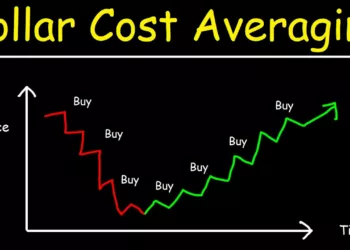How Banks Determine CD Rates and What Impacts Them
Banks determine the certificate of deposit (CD) rates to offer customers based on multiple macroeconomic factors, primarily related to actions by the Federal Reserve.
The Federal Open Market Committee (FOMC) directly sets key benchmark rates like federal funds rate and the discount rate. As the FOMC raises or lowers rates through monetary policy changes, yields across capital markets including CD rates tend to follow. This is because FOMC rate direction signals the overall tightening or easing stance.
Banks aim to offer CD rates that can attract deposits to fund lending activities without sacrificing net interest rate margin targets. So they must strike a balance between deposit funding costs and loan/investment portfolio yields based on FOMC guidance.
Some specific economic indicators that directly impact FOMC rate decisions and therefore influence CD rates include:
Inflation – Rising inflation often spurs FOMC tightening action through benchmark rate hikes to restrain demand and prices. As rates rise, CD yields tend to follow. The latest Consumer Price Index (CPI) gives guidance on inflation.
Link: Inflation Data – Bureau of Labor Statistics
Unemployment – Low and falling unemployment typically leads to FOMC rate hikes as the labor market signals a strong economic expansion. This boosts CD rates offered by banks competing for deposits. Monthly jobs reports contain unemployment data.
Link: U.S. Bureau of Labor Statistics
GDP Growth – Accelerating GDP growth may prompt FOMC tightening via rate hikes to prevent overheating while slowing growth could bring rate cuts and easier monetary policy. GDP direction shapes CD rate direction.
Lending Activity – In hot economies, rising commercial and consumer lending activity can increase bank funding needs. To attract these deposits, competitive CD rate increases often follow. Loan data hints at funding demand.
So in summary, CD rates offered by banks move in correlation with key benchmarks like Fed Funds rate, which are influenced by economic indicators like jobs data and inflation indexes as interpreted by the FOMC.
Links: Bureau of Economic Analysis and FDIC Bank Find
Comparing Rates Across Institutions
While most banks and financial institutions benchmark CD rates relative to federal rate direction, market competition also plays a key role.
Generally major multinational banks tend to follow federal rate direction very closely with smaller premiums or discounts to benchmarks. Large banks have greater access to diverse, lower cost capital sources so less pressure to use high-yield CDs for funding.
Meanwhile online banks, smaller regional banks, and credit unions tend offer higher CD rates with wider premiums above benchmarks. These institutions compete vigorously to attract deposits as a lower cost funding source to finance growth.
For example when the 12-Month CD rate set by the Fed is 2.5%, these might be sample competitive rates:
- Big National Bank: 2.55% APY
- Regional Bank: 2.60% APY
- Online Bank: 2.75% APY
- Credit Union: 2.65%% APY
So while underlying rate direction follows Fed benchmarks, competitive pressures create a range of premiums across providers. Consumers can shop among institutions to maximize yield.
Interactions with Other Financial Products
Rising or falling CD rates impact yields across many other savings products and securities. As benchmark rates rise or fall, these tend to correspondingly adjust to remain competitive:
Savings Account Rates – Savings yields are often set based on a percentage of average CD yields, ex. 40% of 12-Month CD rates. So CD rate shifts impact savings returns.
Money Market Funds – These returns closely track short-term yields including CD benchmarks as investors can easily move cash among vehicles. Declining CD rates lower MMF yields.
Bond Funds – Particularly in short-duration bond categories, underlying bond yields adjust relative to comparable CD benchmarks to remain attractive. Otherwise investors sell bonds to buy CDs.
Adjustable Rate Mortgages – Many ARMs have interest rates benchmarked to short-term CD indexes like 12-Month CD averages. So when CD rates rise, ARM rates follow for borrowers.
Brokered CDs – Called BCDs, these are CDs issued in large denominations by banks then broken down and resold by securities dealers to individual investors. Their rates closely track bank CDs.
So overall shifts in consumer bank CD rates impact returns across many other low risk investment vehicles like bonds, money funds, and BCDs which compete for similar investor capital.
Links: Mortgage Bankers Association, National Automobile Dealers Association and CreditCards.com
Consumer Risk vs. Reward Calculus
Evaluating CD rate offers requires assessing their risks against potential rewards:
Rewards
- Fixed Returns – CD rates guarantee a minimum fixed rate of return over investment timeframe unlike bonds or stocks which can decline in market value. Provides certainty.
- Often Beat Savings Returns – CD rates normally offer significantly higher yields than basic savings accounts, providing additional income.
- FDIC Insurance – Principal up to $250,000 is insured per depositor per bank. Protects against losses if bank fails. Lower risk profile than bonds or stocks.
Risks
- Reduced Liquidity – Depositing funds into CDs locks up capital for designated terms ranging from 1 month to 5 years. Adds opportunity cost vs. savings or money market accounts allowing withdrawals.
- Interest Rate Risk – Possibility that interest rates rise after buying a CD, tying up funds at lower yields in a rising rate environment. Creates foregone income relative to higher future yields.
- Inflation Risk – While CD rates offer fixed returns, inflation can accelerate and reduce real purchasing power of CD earnings if rate trails inflation. Key consumer price index to watch.
Weighing these primary factors – fixed returns, earnings rates, liquidity, rate direction, inflation – determines attractiveness of CD offers. Short 1-year CDs help reduce duration risks.
Shifts in Loan Rates Impact Borrowing
Personal loan rates shift based on the Prime Rate, which has correlation to CD rate benchmarks like the 12-month CD average. When bank CD funding costs paid to depositors are higher, rates on new loans tend to increase as well to maintain net interest margin for lenders.
This dynamic impacts consumer borrowing behavior. For example if CD rates spike due to Fed tightening, lending rates across products like auto loans, personal loans and adjustable rate mortgages will also rise rapidly. This cools borrowing demand as higher rates deter some buyers.
However once rates peak and start declining again, previously postponed borrowing and lending activity starts to accelerate again with the lower rates. Consumers seek to lock rates before any potential rise.
There also tends to be seasonal impacts. For example buying activity including willingness to take loans increases into the holidays with anticipated income and home buying rises into spring with school calendars. So borrowing follows cycles.
Link: Consumer Financial Protection Bureau and National Foundation for Credit Counseling
In summary, shifts in CD rates which impact lending rates can accelerate or slow consumer borrowing at different points in economic and seasonal cycles. Tracking indicators like Prime Rate and CD rates helps consumers optimize both lending and savings decisions.
Please let me know if you need any additional details or have areas you would like me to focus on more regarding impacts of CD rate changes across financial markets and instruments. I can continue to build out and refine this article.
















































